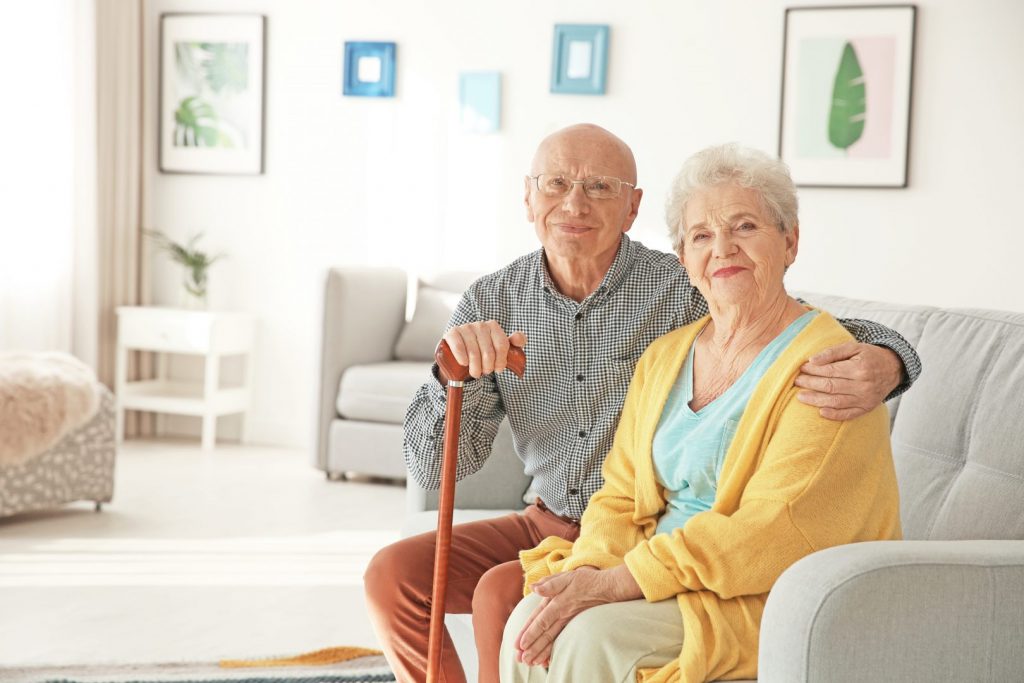
A couple content with aging in place in their current home and not needing the burden of considering finding or moving into another living space
Most of us have heard of Maslov’s “Hierarchy of Needs.” Included in the most basic of needs in his first tier which is “physiological” is shelter – along with food and sleep which commonly happens at home as well. The second tier in his pyramid is safety – also accomplished through our efforts of helping people age in place effectively in their present homes.
This brings us to the benefit of aging in place. Since shelter represents our primeval need to focus on having a place to live for our survival, and since aging in place means that many of us already have located, identified, and selected our long-term home, we need not be concerned any longer about where we are going to live or our housing needs. This is great!
For people of all ages, worldwide, who know right now that they are living in the home that fulfills what they want in a location or layout – or one that they can be relatively happy living in to the exclusion of considering any other housing option – this basic housing need has been met. End of story.
Just think of the amount time, energy, and emotional stress that people can been saved by knowing that their present home is the one they will remain living in. No more need (if there was one at any time) to read real estate magazines or newspaper ads, watch real estate buying shows on television, visit open house on weekends, meet with a lender to complete a financing application for pre-approval for a mortgage loan, drive around with a real estate agent (as nice as they are and as pleasant as this might be), and spend hours and days (and even entire weekends) looking and looking at homes that can be purchased.
Once that suitable new home (new but not necessarily new construction) has been identified, there are a series of additional steps to complete. First, they must prepare their present home to be sold. This could mean pressure cleaning the exterior, painting the entire exterior and interior or just doing the trim or touch-up, inspecting the roof and mechanical systems (which likely means hiring a professional home inspector), making cosmetic improvements and patching cracks and other imperfections in the home (walls, flooring, cabinets, counters, and other areas of the home that might be showing signs of wear and tear), putting in landscaping to dress up the appearance (depending on the time of year), decluttering their home (possibly with the assistance of a professional home stager or move manager), and then meeting with the real estate agent to actually list their home – with a sign in their front yard to officially declare their intentions of moving on.
After that step is complete and the listing agreement has been signed, there are going to be people coming in to take pictures for the listing advertising, and then additional people coming to view their home in consideration of purchasing it for themselves. This is a major transition for the people who been occupying their home – for as short or long as that might have been. Now, they are guests in their own home, They have to keep it ready to show at a moment’s notice they can’t break anything, stain anything, or do anything else that looks like they actually live there because they don’t technically own their home anymore – legally, yes, but this is just a formality because they have committed to selling. Now they must keep their home in top presentable condition at all times.
Next, or somewhere along the way, comes packing everything they own into boxes, crates, or containers, putting them all in a moving van, moving it to their new address, and then beginning the loing process of unpacking and adjusting to life in their new location.
This is fine for the people who want to undertake it, but for those of us who are committed to aging in place – and serving those who are doing this – this entire lengthy and potentially stressful process can be avoided, and we can just keep going in our current homes – maintaining life the way it has been. An aging in place decision to remain put in one’s current home eliminates the need to consider alternatives because the current home meets their needs. This brings a certain amount of peace of mind and satisfaction – knowing that those steps involved in considering another dwelling (and then possibly acting upon that to eventually move) do not need to be explored or undertaken.
